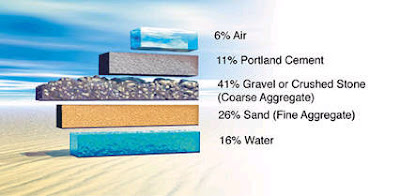Soil Tests in Construction
There are many types of Soil compaction tests which are performed on soil. Some of these are :-
1) The Sand Cone Method (FDT)
One of the most common test to determine the field density of soil is the sand-cone method. But it has a major limitation that this test is not suitable for saturated and soft soils.
One of the most common test to determine the field density of soil is the sand-cone method. But it has a major limitation that this test is not suitable for saturated and soft soils.
The formula used are
Volume of soil, ft3 (m3)=[weight of sand filling hole, lb (kg)] /[ Density of sand, lb/ft3 (kg/m3)]
Volume of soil, ft3 (m3)=[weight of sand filling hole, lb (kg)] /[ Density of sand, lb/ft3 (kg/m3)]
% Moisture = 100(weight of moist soil – weight of dry soil)/weight of dry soil
Field density, lb/ft3 (kg /m3)=weight of soil, lb (kg)/volume of soil, ft3 (m3)
Dry density=field density/(1 + % moisture/100)
% Compaction=100 (dry density)/max dry density
Maximum density is found by plotting a density–moisture curve.
2) California Bearing Ratio (CBR)
The California bearing ratio (CBR) is used as a determine the quality of strength of a soil under a pavement. It also measures the thickness of the pavement, its base, and other layers.
CBR = F/Fo
where
F = force per unit area required to penetrate a soil mass with a 3-in2 (1935.6-mm2 ) circular piston (about 2 in (50.8 mm) in diameter) at the rate of 0.05 in/min (1.27 mm/min)
The California bearing ratio (CBR) is used as a determine the quality of strength of a soil under a pavement. It also measures the thickness of the pavement, its base, and other layers.
CBR = F/Fo
where
F = force per unit area required to penetrate a soil mass with a 3-in2 (1935.6-mm2 ) circular piston (about 2 in (50.8 mm) in diameter) at the rate of 0.05 in/min (1.27 mm/min)
F0 = force per unit area required for corresponding penetration of a standard material.
3) Soil Permeability
Darcy’s law is applicable in determining the soil permeability. Darcy law states that
V = kiA
Darcy’s law is applicable in determining the soil permeability. Darcy law states that
V = kiA
where
V = rate of flow, cm3 /s,
A = cross-sectional area of soil conveying flow, cm2
k = Coefficient of permeability which depends on grain-size distribution, void ratio and soil fabric. The value varies from 10 cm/s for gravel to less than 10–7 for clays.
V = rate of flow, cm3 /s,
A = cross-sectional area of soil conveying flow, cm2
k = Coefficient of permeability which depends on grain-size distribution, void ratio and soil fabric. The value varies from 10 cm/s for gravel to less than 10–7 for clays.



Comments
Post a Comment